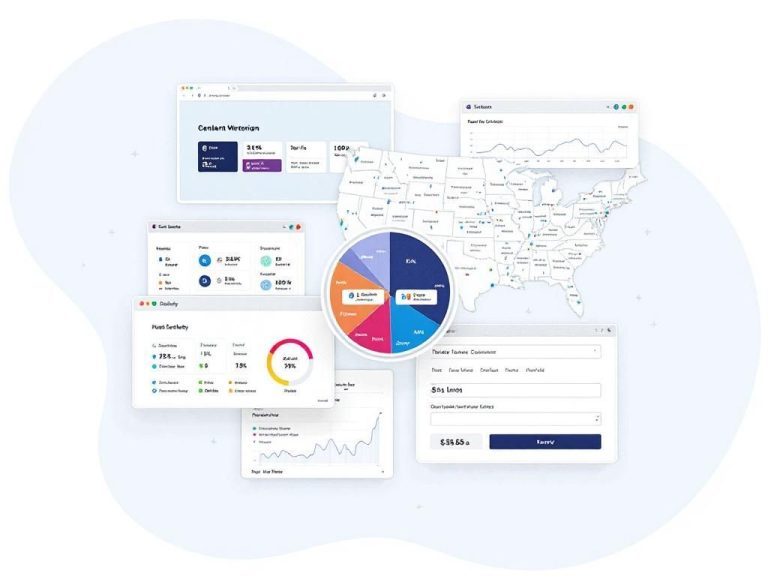In the era of artificial intelligence and machine learning, data serves as the backbone of model training. However, the scarcity of quality data for specific applications can hinder the development of robust models. Enter synthetic data tools—innovative technologies that generate artificial data to solve this problem. By leveraging synthetic data, organizations can enhance their training pipelines, improve model accuracy, and accelerate the deployment of AI solutions. This article explores how synthetic data tools are revolutionizing model training, their benefits, and practical applications in various industries.
The Rise of Synthetic Data
Synthetic data is information generated by algorithms instead of being collected from real-world events. This data mimics the statistical properties and characteristics of real data but does not contain sensitive or private information. Its rise can be attributed to various factors:
- Data Privacy Regulations: With stringent laws like GDPR and CCPA, organizations are required to ensure data privacy, making synthetic data an attractive alternative.
- Data Scarcity: In specialized fields, obtaining sufficient real-world data can be challenging. Synthetic data fills this gap effectively.
- Cost Efficiency: Collecting and annotating real data can be expensive. Synthetic data generation can reduce these costs significantly.
Benefits of Synthetic Data Tools
1. Enhanced Model Performance
Using synthetic data can lead to improved model performance by:
- Providing a more diverse dataset that covers edge cases which are often underrepresented in the real data.
- Allowing for controlled experiments, where specific variables can be manipulated to study their effect on model outputs.
2. Expedited Development Cycle
Organizations can speed up their AI model development cycle with synthetic data through:
- Rapid data generation, allowing teams to create datasets in a matter of hours or days.
- Elimination of time-consuming data collection processes.
3. Cost Savings
Utilizing synthetic data tools can lead to significant cost reductions:
| Aspect | Traditional Data Collection | Synthetic Data Generation |
|---|---|---|
| Time to Acquire Data | Weeks to Months | Hours to Days |
| Cost | High | Lower |
| Data Privacy Risks | High | Minimal |
| Diversity of Data | Limited | Extensive |
Applications of Synthetic Data
1. Autonomous Vehicles
In the autonomous vehicle industry, safety is paramount. Testing with synthetic data allows manufacturers to:
- Simulate a wide range of driving conditions without the risk of accidents.
- Generate rare scenarios like extreme weather conditions or accident situations to train their models.
2. Healthcare
Synthetic data tools are being adopted in healthcare for:
- Developing predictive models for patient outcomes without compromising patient confidentiality.
- Training diagnostic algorithms with diverse patient data simulations.
3. Finance
In finance, synthetic data can be used to:
- Create customer profiles to enhance fraud detection models.
- Simulate economic downturns to stress test financial algorithms.
Challenges and Considerations
While synthetic data offers numerous advantages, there are challenges that organizations must consider:
- Quality Control: Ensuring that synthetic data accurately represents real-world scenarios is crucial for model reliability.
- Overfitting: Models trained predominantly on synthetic data may not generalize well to real-world applications.
- Regulatory Compliance: Organizations must ensure that the synthetic data generation process complies with relevant regulations.
Future of Synthetic Data Tools
The future of synthetic data tools looks promising, with advancements in machine learning and AI driving innovation. Key trends to watch include:
- Integration with Real Data: Hybrid models combining real and synthetic data will likely become the standard, allowing for more robust training.
- Improved Algorithms: Ongoing research will lead to better algorithms for generating high-quality synthetic data.
- Wider Adoption: As awareness grows, more industries will leverage synthetic data, broadening its applications further.
Conclusion
Synthetic data tools are poised to change the landscape of model training by providing solutions to challenges that have long plagued data scientists and organizations. By leveraging these innovative technologies, organizations can create better, more accurate models while navigating the complexities of data privacy and scarcity. As the field evolves, embracing synthetic data will be key to unlocking the full potential of AI and machine learning.
FAQ
What is synthetic data and how is it used in model training?
Synthetic data is artificially generated data that mimics real-world data patterns. It is used in model training to improve the performance and robustness of machine learning algorithms, particularly when real data is scarce or difficult to obtain.
What are the benefits of using synthetic data for machine learning?
Using synthetic data can lead to reduced costs, faster model training times, and enhanced privacy since it can be generated without compromising sensitive information. It also allows for the creation of diverse scenarios that might not be represented in the available real-world data.
How does synthetic data improve model accuracy?
Synthetic data can improve model accuracy by providing a more comprehensive training set that covers a wider range of scenarios. This helps the model learn better patterns and make more accurate predictions when faced with real-world data.
Are there any limitations to using synthetic data in model training?
Yes, while synthetic data can be beneficial, it may not capture all the nuances of real-world data. If not generated correctly, it can lead to models that perform poorly on actual data due to overfitting or lack of representativeness.
What industries can benefit from synthetic data tools?
Industries such as healthcare, finance, autonomous driving, and retail can greatly benefit from synthetic data tools. These sectors often require large datasets for training models while facing challenges related to data privacy and scarcity.
How can businesses start implementing synthetic data tools for model training?
Businesses can start by identifying areas where data is limited, then explore synthetic data generation tools that fit their specific needs. Collaborating with data scientists and investing in the right technology can also facilitate a smooth implementation.




